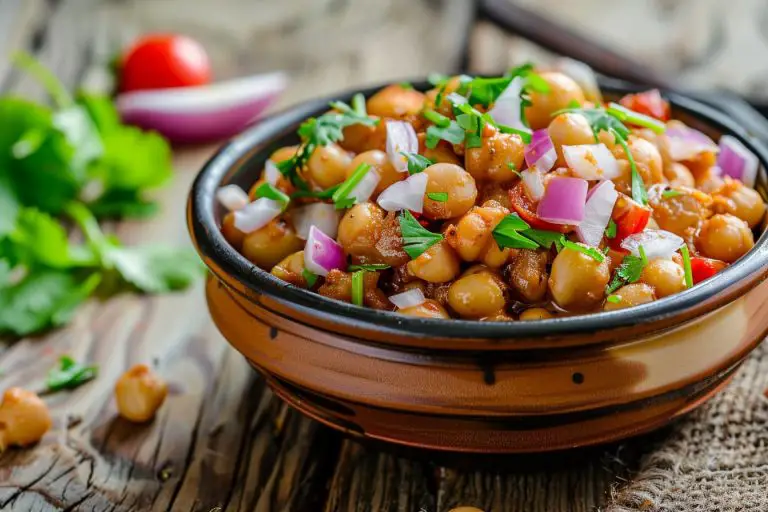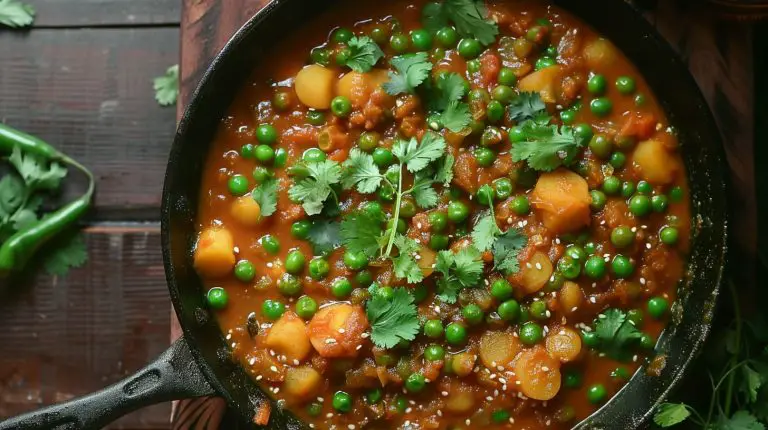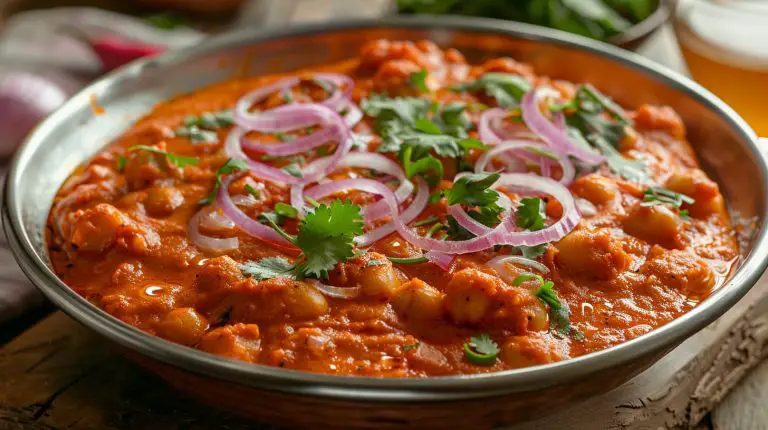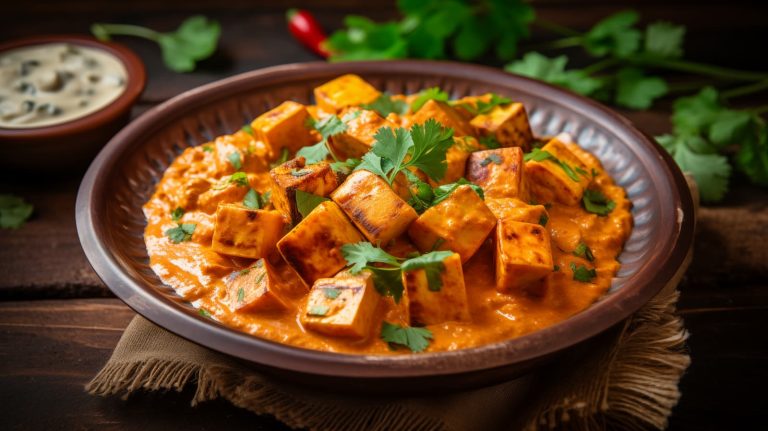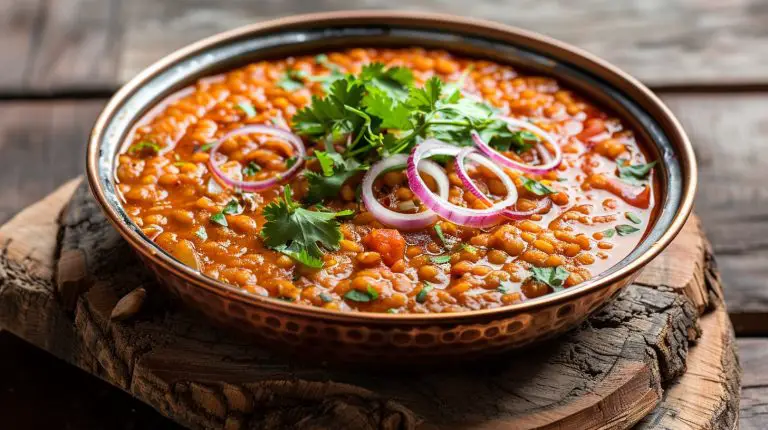Veg Biriyani Guide: Essential Tips and Tricks for Perfecting This Indian Classic
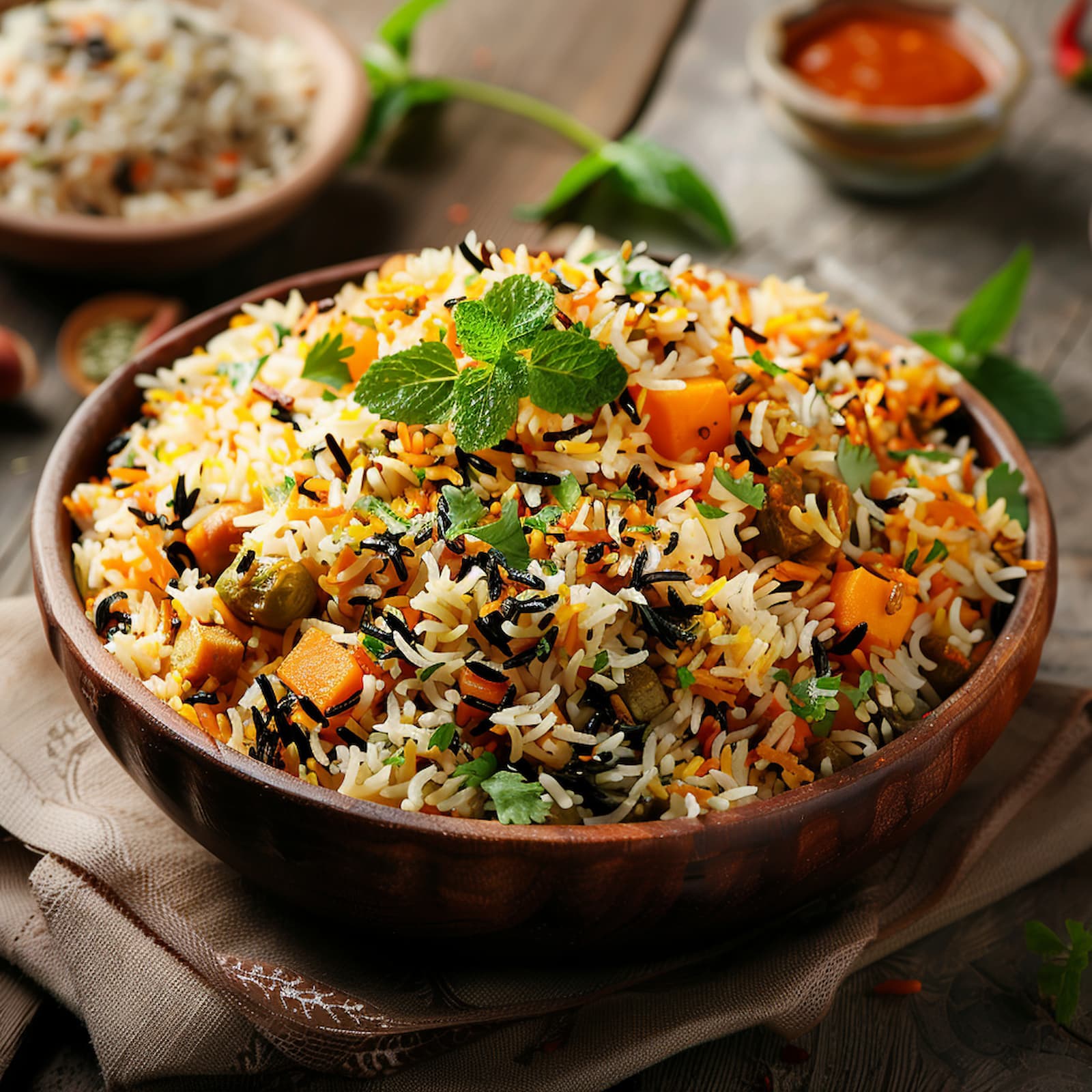
Did you know that Biryani traces its roots back to the Mughal era, where it was a symbol of grandeur and extravagance?
In just under an hour and with basic pantry staples and fresh vegetables, you can whip up an authentic Indian Veg Biryani that’s sure to impress.
Why You’ll Love This Recipe:
In this guide, you’ll learn
- The Royal History Behind The Veg Biriyani
- How to make mouth-watering Veg Biriyani in your kitchen
- Healthy Vegan Alternatives For The Items Used In the Recipe
- Common Mistakes To Avoid, Pro Tips To Enhance The Taste Of the Dish
- FAQs(Reader Questions Answered) and much more stuff!
So, grab your apron, and let’s dive in!
The Royal History Of The Veg Biriyani
Origins and Cultural Significance of Veg Biriyani:
Vegetable Biryani, a rich and aromatic rice dish, finds its roots in the Indian subcontinent. Biryani, including its vegetable version, holds a special place in the hearts and cultures of people across the Indian subcontinent.
- The dish’s origins are often traced back to the Mughal Empire’s royal kitchens in the late 16th century, where biryani was developed as a confluence of Persian pilaf traditions and Indian spices and ingredients.
- The word “biryani” itself is believed to originate from the Persian word “birian,” meaning “fried before cooking,” referring to the method of frying the rice in ghee (clarified butter) before boiling it in water.
- The introduction of vegetable biryani came later as a variation catering to India’s significant vegetarian population, incorporating a wide array of vegetables, aromatic spices, and sometimes even fruits like pineapple or dried fruits for a unique flavor.
- Vegetable Biryani is a popular choice during festivals, weddings, and other special occasions, symbolizing communal harmony and joy.
Regional Variations of Veg Biriyani:
The preparation and ingredients of Vegetable Biryani vary significantly across different regions of India, reflecting local tastes, traditions, and available produce. For instance:
- Hyderabadi Vegetable Biryani: Known for its rich and spicy flavor, incorporating a special masala blend, fried onions, mint, and yogurt-marinated vegetables, cooked in a sealed pot (Dum style).
- Kolkata Vegetable Biryani: Includes potatoes and eggs, characterized by its lighter spice profile and the inclusion of rose water and saffron for fragrance.
- South Indian Vegetable Biryani: Often uses coconut milk and a variety of local vegetables like drumsticks and broad beans, with a distinct tanginess from tamarind or lemon juice.
Modern Adaptations of Veg Biriyani:
Contemporary twists on Vegetable Biryani reflect global influences and dietary trends. Modern adaptations include:
- Quinoa or Cauliflower Rice Biryani: Catering to health-conscious individuals or those following a low-carb diet.
- Vegan Biryani: Uses plant-based substitutes for ghee and dairy products traditionally used in the marination process.
- Instant Pot Biryani: Simplifies the cooking process, making it more accessible to home cooks with busy schedules.
Fun Facts about Veg Biriyani:
- The world’s largest vegetable biryani, weighing a staggering 3,000 kilograms, was prepared by a team in India, showcasing the dish’s immense popularity and cultural significance. This culinary masterpiece required over 300 chefs and was served to more than 10,000 people, highlighting the dish’s role in bringing communities together.
- Biryani vs. Pulao: While often confused, the main difference lies in the cooking technique; biryani involves cooking rice and vegetables separately before layering, whereas pulao is cooked in a single pot.
How to make Restuarant Style Veg Biriyani At Home As A Beginner
Main Ingredients:
-
- 1 cup Basmati rice, soaked for 30 minutes and drained
- 1 ¾ cups water
- 2 tablespoons olive oil (a dairy-free alternative to ghee)
- 1 large onion, thinly sliced
- 1 small onion for garnish
- 1 ½ cups mixed vegetables (carrots, green beans, bell peppers, peas)
- ½ cup cauliflower florets
- ¼ cup chopped mint leaves
- ¼ cup chopped cilantro (coriander)
- Salt, to taste
For the Biryani Masala:
-
- 1 teaspoon cumin seeds
- 4 cloves
- 4 green cardamom pods
- 2-inch piece of cinnamon stick
- 1 bay leaf
- ½ teaspoon turmeric powder
- 1 teaspoon coriander powder
- 1 teaspoon garam masala
- 1 tablespoon ginger-garlic paste
- 2 green chilies, slit (adjust to taste)
- 1 cup tomato puree
- Juice of half a lemon
- 2 tablespoons almond milk yogurt (a substitute for dairy yogurt)
Instructions:
- Prepare the Rice:
- Rinse the Basmati rice thoroughly under cold water until the water runs clear to remove excess starch.
- In a saucepan, bring 1 ¾ cups of water to a boil. Add the rice, reduce the heat to low, cover, and simmer for 12-15 minutes, or until the water is absorbed and the rice is tender. Remove from heat and let it sit, covered, for 5 minutes. Fluff with a fork.
- Cook the Vegetables:
- Heat the coconut oil in a large pan over medium heat.
- Add the cumin seeds, cloves, cardamom, cinnamon, and bay leaf. Sauté for a minute until fragrant.
- Add the sliced onions and cook until they turn golden brown.
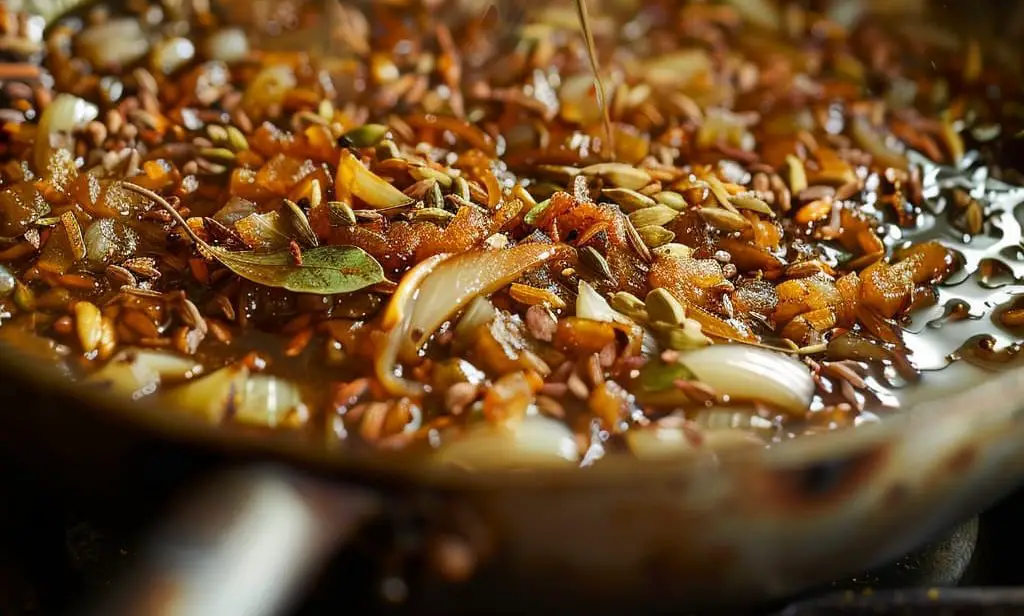
-
- Stir in the ginger-garlic paste and green chilies, cooking for another minute.
- Add the mixed vegetables and cauliflower. Cook for 5-7 minutes until they start to soften.
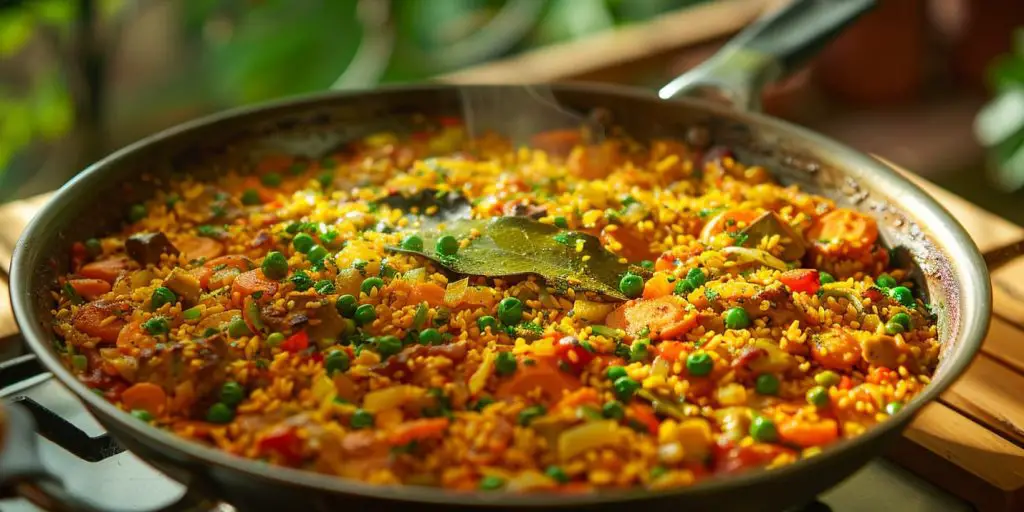
-
- Mix in the tomato puree, turmeric, coriander powder, and salt. Cook for 5 minutes.
- Add the garam masala and almond milk yogurt. Stir well and cook for another 2 minutes. Remove from heat.
- Layer the Biryani:
- In a deep baking dish or pot, spread half of the cooked rice as the first layer.
- Over the rice, evenly spread the cooked vegetable mixture.
- Top with the remaining rice. Sprinkle chopped mint, cilantro, and lemon juice over the top.
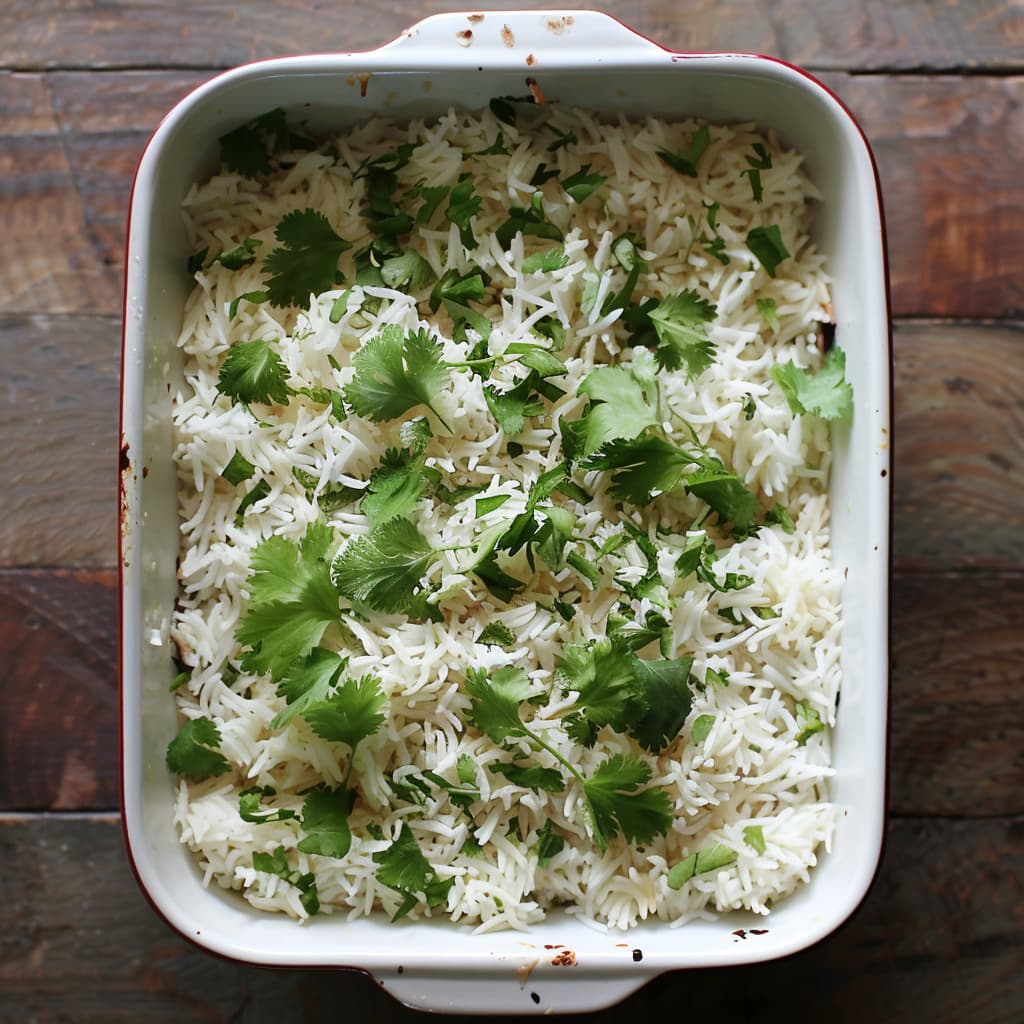
- Cook the Biryani:
- Preheat your oven to 350°F (175°C).
- Cover the baking dish with aluminum foil or a tight-fitting lid.
- Bake for 15-20 minutes, allowing the flavors to meld together.
- Serving:
- Gently mix the biryani before serving to distribute the layers.
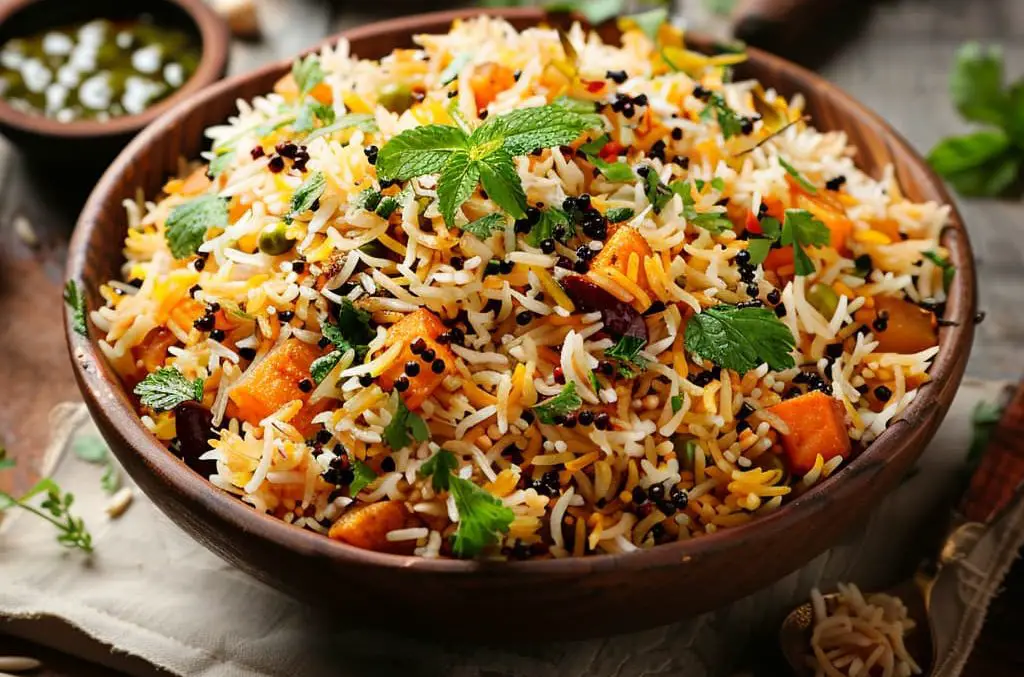
-
- Serve hot with a side of cucumber raita made with dairy-free yogurt.
Vegan Alternatives For The Ingredients Used In the Veg Biriyani Recipe
- Ghee (Clarified Butter):
- Vegan Alternative: Use coconut oil or olive oil. These oils can mimic the richness of ghee and are healthier fat options. For a buttery taste, consider vegan butter.
- Yogurt (in Marinades):
- Vegan Alternative: Use coconut yogurt or almond milk yogurt. These plant-based yogurts can tenderize the vegetables in a similar way to dairy yogurt, adding a creamy texture without dairy.
- Paneer (Cheese):
- Vegan Alternative: Tofu or tempeh makes an excellent substitute for paneer. Press and marinate them in spices to infuse flavors. Tofu can absorb the biryani spices well, mimicking the texture of paneer.
- Cream (for Richness):
- Vegan Alternative: Coconut cream or cashew cream can be used to add richness to the biryani. Blend soaked cashews with water until smooth for a homemade cashew cream.
Mistakes To Avoid
Ingredient Selection:
- Basmati Rice Quality: Using old or low-quality basmati rice can result in a biryani that lacks the characteristic aroma and texture. Always opt for premium, aged basmati rice for the best flavor and fluffiness.
- Vegetable Freshness and Variety: Selecting fresh, high-quality vegetables is crucial. Avoid overripe or wilted vegetables as they can become mushy. Use a colorful variety to enhance both flavor and presentation.
Preparation Pitfalls:
- Rice Washing and Soaking: Skipping the rinsing or not soaking the basmati rice can lead to a sticky biryani. Rinse the rice until the water runs clear to remove excess starch, and soak for at least 30 minutes to ensure it cooks evenly and expands to its full length.
- Vegetable Size Consistency: Cutting vegetables in uneven sizes can result in some being overcooked while others remain undercooked. Aim for uniform sizes for even cooking.
Cooking Techniques:
- Cooking Rice Correctly: One of the most common mistakes is either undercooking or overcooking the rice. Basmati rice should be cooked until it’s 70-80% done before layering with the vegetables. This prevents it from becoming mushy when you cook it further during the dum (steaming) process.
- Heat Management: Cooking biryani on high heat can cause the bottom layer to burn before the steam reaches the top layer. Use a low flame for a gentle and even cook, ensuring the flavors meld beautifully.
- Sealing the Pot: Failing to seal the pot properly during the dum process lets steam escape, resulting in undercooked biryani. Seal the lid with dough or tightly with aluminum foil to trap the steam.
Seasoning and Flavoring:
- Over or Under Seasoning: Balance is key in biryani. Too much spice can overpower the vegetables, while too little will make the dish bland. Taste your cooking at various stages and adjust seasoning as needed.
- Incorporating Fresh Herbs: Adding herbs like mint and cilantro too early can cause them to lose their vibrancy and flavor. Incorporate these towards the end of the cooking process or as a garnish to retain their freshness.
Presentation Tips:
- Layering: Poor layering can result in a mix that’s too homogenized, losing the layered effect that biryani is famous for. Alternate layers of rice and vegetables carefully, finishing with a layer of rice on top for the classic biryani presentation.
- Garnishing: Don’t underestimate the power of garnishing. Fried onions, chopped herbs, saffron milk, and nuts not only add flavor but also make the dish visually appealing. Avoid overdoing it to maintain elegance.
- Serving Temperature: Biryani is best served warm, not piping hot, or at room temperature. This allows the flavors to be at their best and makes the dish more enjoyable.
Pairing Suggestions for Veg Biriyani
- Beverages: A glass of chilled mint cucumber raita or a warm, spiced masala chai can complement the biryani by balancing its rich flavors. For a festive touch, a light, aromatic white wine pairs beautifully, enhancing the spices without overwhelming them.
- Side Dishes: A tangy lemon pickle or a fresh cucumber salad adds a crisp contrast to the biryani’s richness. Papadums or crispy fried onions can add texture.
- Main Courses: For a fuller meal, serve alongside a creamy paneer curry or a lentil dal. These add protein and balance the meal’s nutritional profile while respecting the vegetarian theme.
Seasonal Variation for Veg Biriyani
- Spring: Incorporate asparagus, green peas, and fresh green beans to capture the essence of spring. A hint of mint in the biryani can also reflect the season’s freshness.
- Summer: Add zucchini, bell peppers, and cherry tomatoes for a lighter version suitable for hot weather. A squeeze of lemon juice before serving can offer a refreshing zesty flavor.
- Autumn: Introduce root vegetables like carrots, sweet potatoes, and pumpkin to the biryani for a hearty autumnal dish. Spices like cinnamon and nutmeg can enhance the seasonal feel.
- Winter: Use cauliflower, peas, and potatoes for their ability to absorb and meld with the warming spices typical of winter cuisine. Increasing the amount of ghee or coconut oil can make the dish more comforting during the cold months.
Always Keep In Mind, that the inclusion of newer veggies or spices can end up impacting the overall taste of the dish, so you may need to adjust your other spices or salt portions to counter that.
Common Problems You May Face While Cooking Veg Biriyani
Problem: Selecting the Right Rice
You might be unsure which basmati rice to choose, given the variety available.
Solution: Look for long-grain, aged basmati rice for the best aroma and texture. Aged rice cooks up fluffier and less sticky, perfect for biryani.
Problem: Cooking the Rice Correctly
You might struggle to cook the rice perfectly, ending up with it either too mushy or undercooked.
Solution: Use a 1:1.5 rice-to-water ratio and cook until the rice is 70-80% done. It should be slightly firm since it will continue to cook with the vegetables.
Problem: Layering the Biryani
The concept of layering might be confusing, leading to uneven distribution of rice and vegetables.
Solution: Start with a layer of rice, add a layer of the vegetable mixture, and repeat, ending with a layer of rice on top. Each layer should be evenly spread to ensure a harmonious mix of flavors in every bite.
Problem: Sealing the Pot for Dum Cooking
You might not know how to properly seal the pot for the dum (steaming) process, leading to undercooked biryani.
Solution: Cover the pot with a tight-fitting lid. If necessary, seal the edges with dough or a moist cloth to trap the steam inside. This helps cook the biryani evenly.
Problem: Garnishing
You’re unsure about how to garnish the biryani or might forget it altogether.
Solution: Garnish your biryani with fried onions, fresh cilantro, mint leaves, and perhaps a few strands of saffron soaked in milk for added color and aroma. This enhances both the flavor and presentation.
Tips for Perfecting Veg Biriyani
- Aged Basmati Rice: Always opt for premium, aged basmati rice. The aging process enhances the rice’s aroma and ensures that each grain remains separate and fluffy upon cooking, giving your biryani its characteristic texture.
- Balanced Spice Infusion: To infuse your biryani with deep, yet balanced flavors, lightly roast whole spices before grinding them. This releases their essential oils and maximizes aroma. Incorporating a small amount of spice mix into the rice water can also impart a subtle flavor to each grain.
- Sautéing Vegetables: To add another layer of flavor, sauté your vegetables in ghee (or a vegan alternative) until they’re lightly caramelized. This not only precooks the vegetables but also enhances their sweetness and complexity.
- Layering Technique: When layering, sprinkle a little saffron-infused milk or water over the rice for a beautiful color gradient and aromatic touch. Arrange the layers in a way that each spoonful offers a harmonious blend of rice, vegetables, and spices.
- Dum Cooking Perfection: For the perfect dum (steaming) process, seal your pot with dough or heavy-duty aluminum foil to trap the steam. The slow cooking in trapped steam melds the flavors beautifully, characteristic of an authentic biryani.
- Rest Before Serving: Let the biryani sit for at least 10-15 minutes after cooking. This resting period allows the flavors to settle and the moisture to redistribute, ensuring the biryani is moist and flavorful throughout.
FAQs about Veg Biriyani (Reader Questions Answered)
1. What if my basmati rice still sticks together after cooking?
- Solution: Ensure you rinse the rice thoroughly before cooking to remove excess starch. Also, adding a teaspoon of oil or a few drops of lemon juice to the boiling water can help prevent sticking.
2. How do I know if the rice is 70-80% cooked?
- Solution: The rice should be mostly translucent but with a slightly firm white core in the center of each grain. It should take about 5-7 minutes to boil after the water returns to a boil.
3. What can I do if I’ve added too much water and the rice is overcooked?
- Solution: If the rice becomes mushy, spread it out on a baking sheet to cool and stop the cooking process. You can then lightly sauté it in a pan with a little oil to help dry it out and restore some texture before layering it with the vegetables.
4. How can I make my biryani more flavorful without making it spicy?
- Solution: Increase the aromatic components like fried onions, mint, cilantro, and whole spices like cardamom, cloves, and cinnamon. These add depth of flavor without adding heat.
5. How can I reheat leftover biryani without drying it out?
- Solution: Sprinkle a little water over the biryani, cover it tightly, and reheat it on a low flame on the stove or in a 300°F oven. Alternatively, microwaving with a cup of water inside the microwave (not in the biryani) can also help retain moisture.
6. What are some vegan alternatives for garnishing the biryani?
- Solution: Use fried onions, toasted nuts, and fresh herbs like cilantro and mint. You can also use vegan yogurt for raita or a drizzle of saffron-infused water for color and aroma.
7. How do I prevent the bottom layer of rice from burning during the dum cooking?
- Solution: Place a flat, heavy pan (like a tawa or griddle) under your cooking pot to distribute the heat more evenly. Keeping the flame low and checking towards the end of cooking can also help prevent burning.
8. Can I use brown basmati rice instead of white?
- Solution: Yes, you can use brown basmati rice for a healthier version. Keep in mind it has a longer cooking time and a nuttier flavor. Soak it for a longer period, and adjust water ratios and cooking times accordingly.
9. How can I prevent my biryani from becoming mushy?
- Solution: Ensure the rice is only 70-80% cooked before layering. Use a wider pot to spread the heat evenly and cook on the lowest flame during the dum process. Also, avoid stirring the biryani once it’s layered.
10. What vegetables work best in a biryani?
- Solution: Firm vegetables like carrots, peas, potatoes, cauliflower, and green beans are traditional. However, feel free to include bell peppers, mushrooms, or any seasonal vegetables you prefer.
11. How long can I store leftover biryani, and how should I reheat it?
- Solution: Leftover biryani can be stored in the refrigerator for up to 3-4 days. Reheat it on the stove over a low flame with a splash of water to keep it moist, or microwave it covered, with a cup of water inside the microwave to prevent drying.
So that was it from my side…
If you have any queries let me know in the comments below.
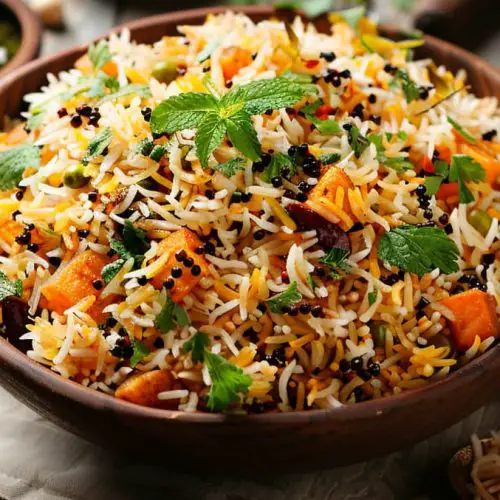
Veg Biriyani Recipe
Ingredients
Main Ingredients:
- 1 cup Basmati rice soaked for 30 minutes and drained
- 1 ¾ cups water
- 2 tablespoons olive oil a dairy-free alternative to ghee
- 1 large onion thinly sliced
- 1 small onion for garnish
- 1 ½ cups mixed vegetables carrots, green beans, bell peppers, peas
- ½ cup cauliflower florets
- ¼ cup chopped mint leaves
- ¼ cup chopped cilantro coriander
- Salt to taste
For the Biryani Masala:
- 1 teaspoon cumin seeds
- 4 cloves
- 4 green cardamom pods
- 2- inch piece of cinnamon stick
- 1 bay leaf
- ½ teaspoon turmeric powder
- 1 teaspoon coriander powder
- 1 teaspoon garam masala
- 1 tablespoon ginger-garlic paste
- 2 green chilies slit (adjust to taste)
- 1 cup tomato puree
- Juice of half a lemon
- 2 tablespoons almond milk yogurt a substitute for dairy yogurt
Instructions
Prepare the Rice:
- Rinse the Basmati rice thoroughly under cold water until the water runs clear to remove excess starch.
- In a saucepan, bring 1 ¾ cups of water to a boil. Add the rice, reduce the heat to low, cover, and simmer for 12-15 minutes, or until the water is absorbed and the rice is tender. Remove from heat and let it sit, covered, for 5 minutes. Fluff with a fork.
Cook the Vegetables:
- Heat the coconut oil in a large pan over medium heat.
- Add the cumin seeds, cloves, cardamom, cinnamon, and bay leaf. Sauté for a minute until fragrant.
- Add the sliced onions and cook until they turn golden brown.
- Stir in the ginger-garlic paste and green chilies, cooking for another minute.
- Add the mixed vegetables and cauliflower. Cook for 5-7 minutes until they start to soften.
- Mix in the tomato puree, turmeric, coriander powder, and salt. Cook for 5 minutes.
- Add the garam masala and almond milk yogurt. Stir well and cook for another 2 minutes. Remove from heat.
Layer the Biryani:
- In a deep baking dish or pot, spread half of the cooked rice as the first layer.
- Over the rice, evenly spread the cooked vegetable mixture.
- Top with the remaining rice. Sprinkle chopped mint, cilantro, and lemon juice over the top.
- Basmati rice forms the topmost layer which is layered over the layer of cooked vegetables.
Cook the Biryani:
- Preheat your oven to 350°F (175°C).
- Cover the baking dish with aluminum foil or a tight-fitting lid.
- Bake for 15-20 minutes, allowing the flavors to meld together.
Serving:
- Gently mix the biryani before serving to distribute the layers.
- Serve hot with a side of cucumber raita made with dairy-free yogurt.

